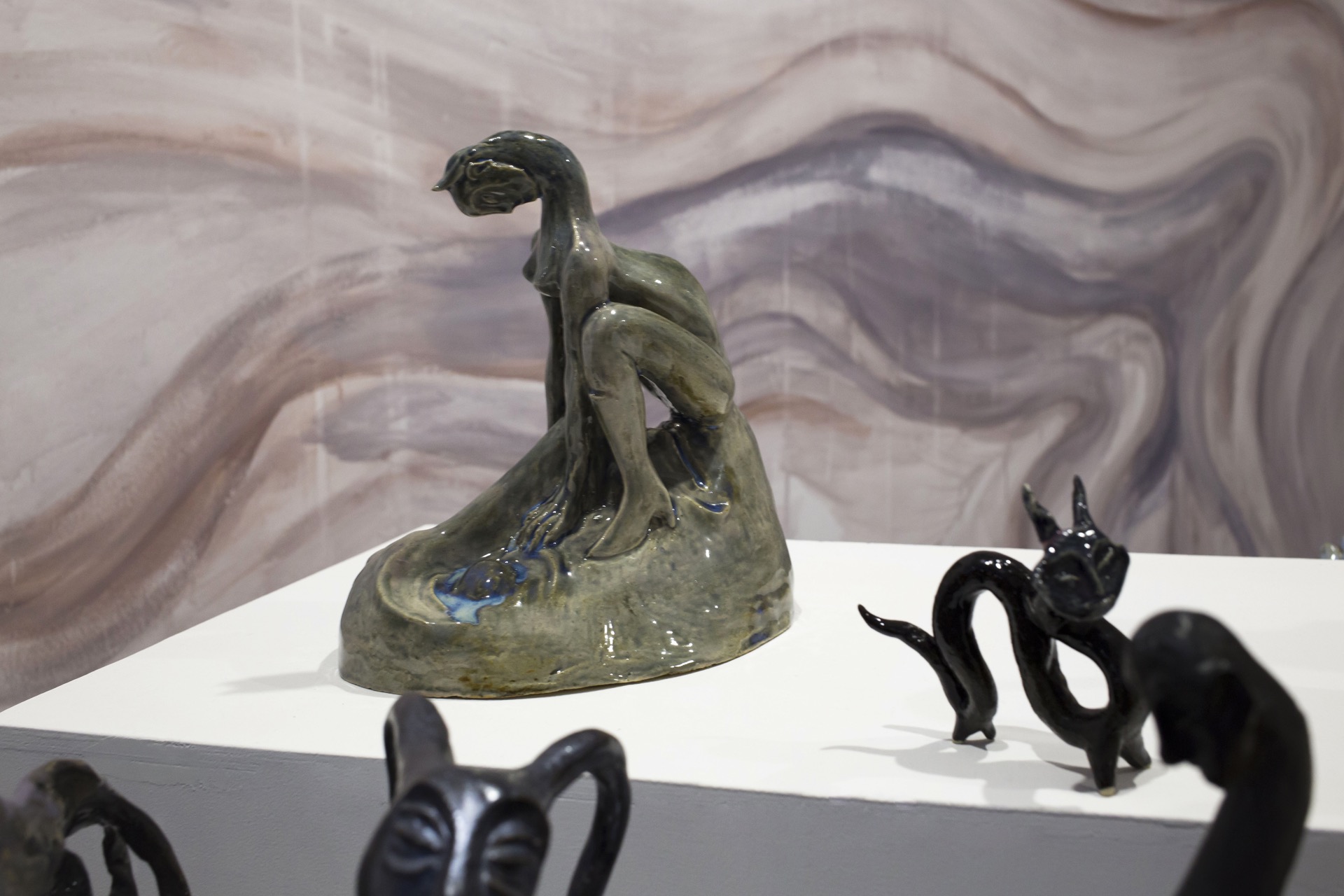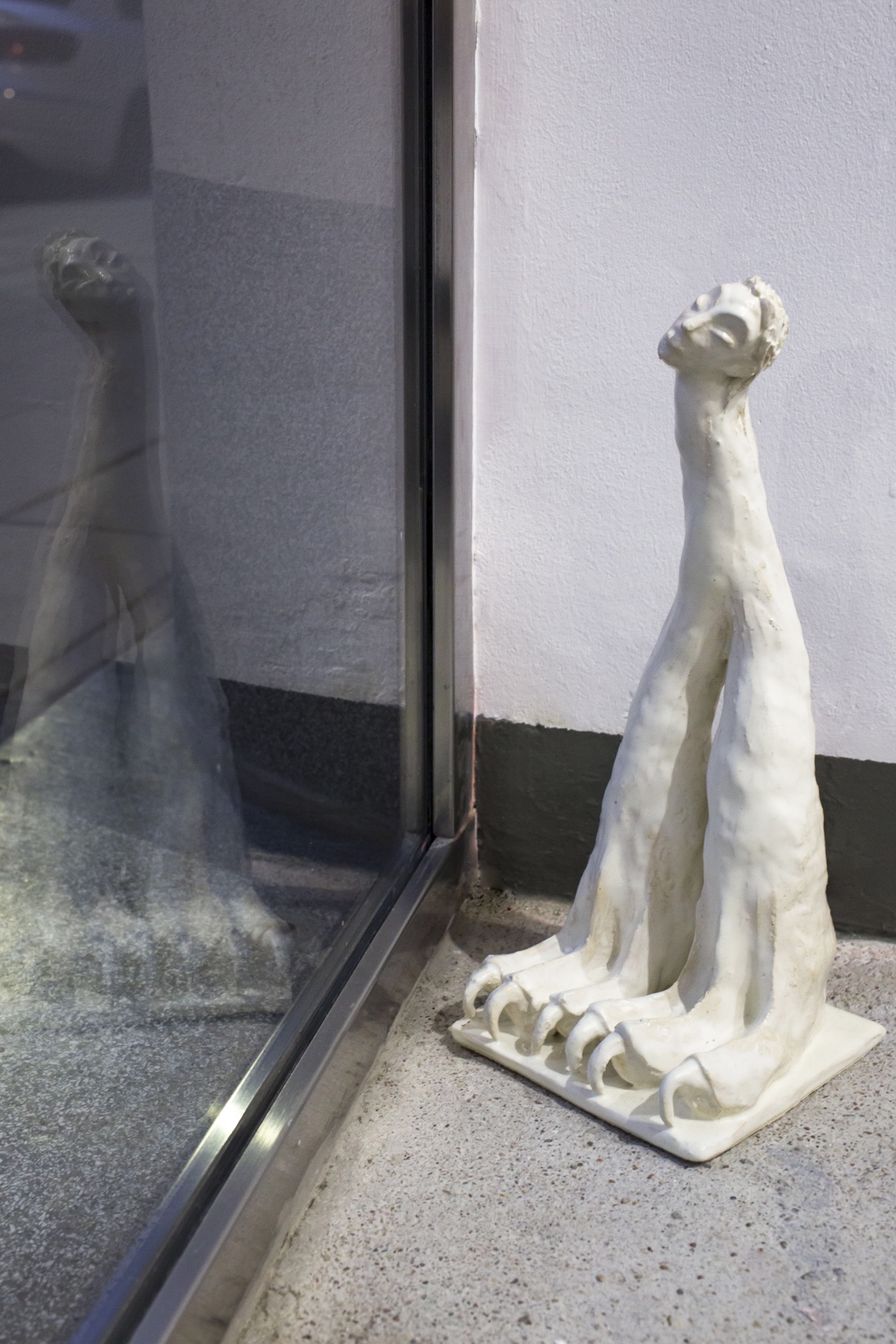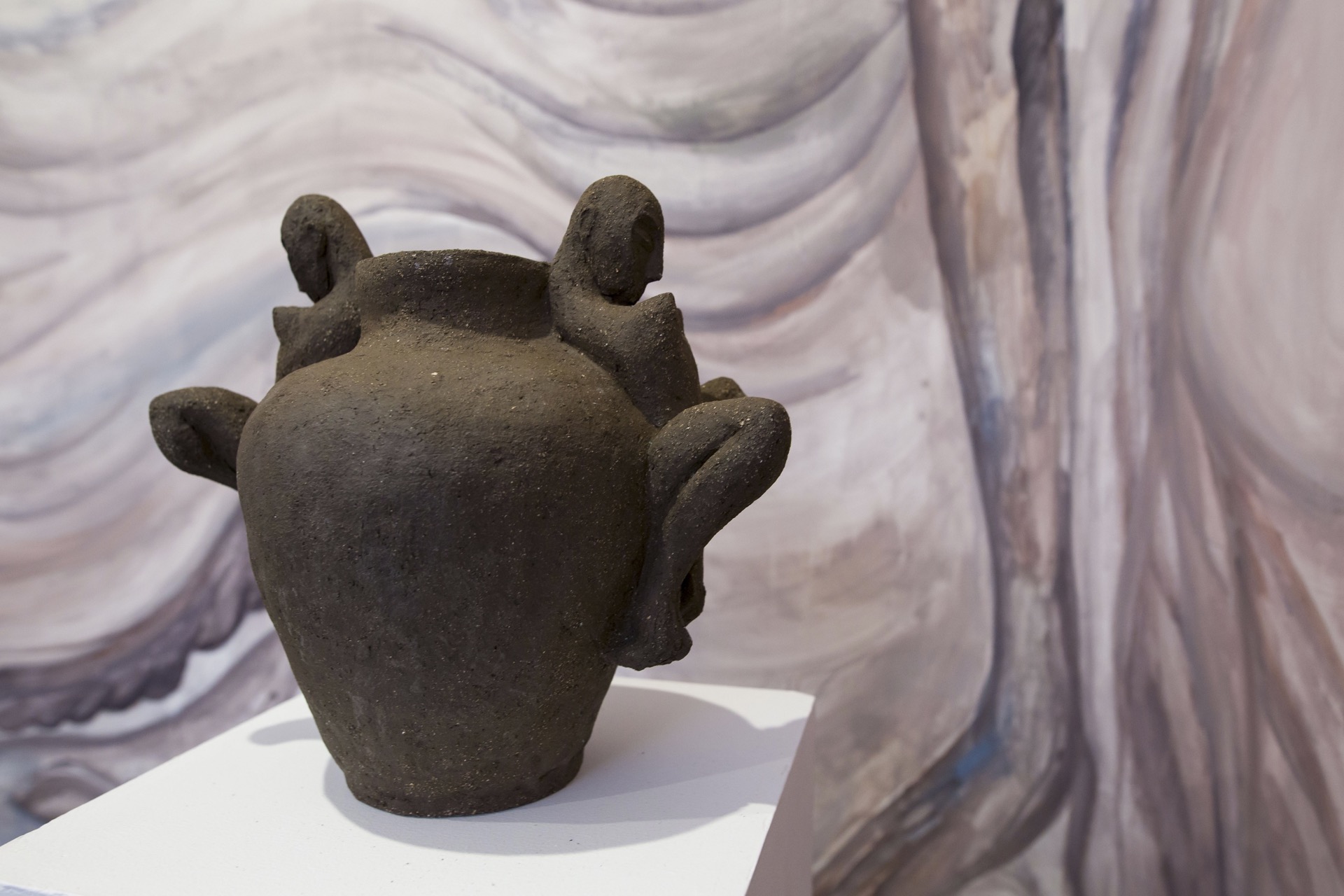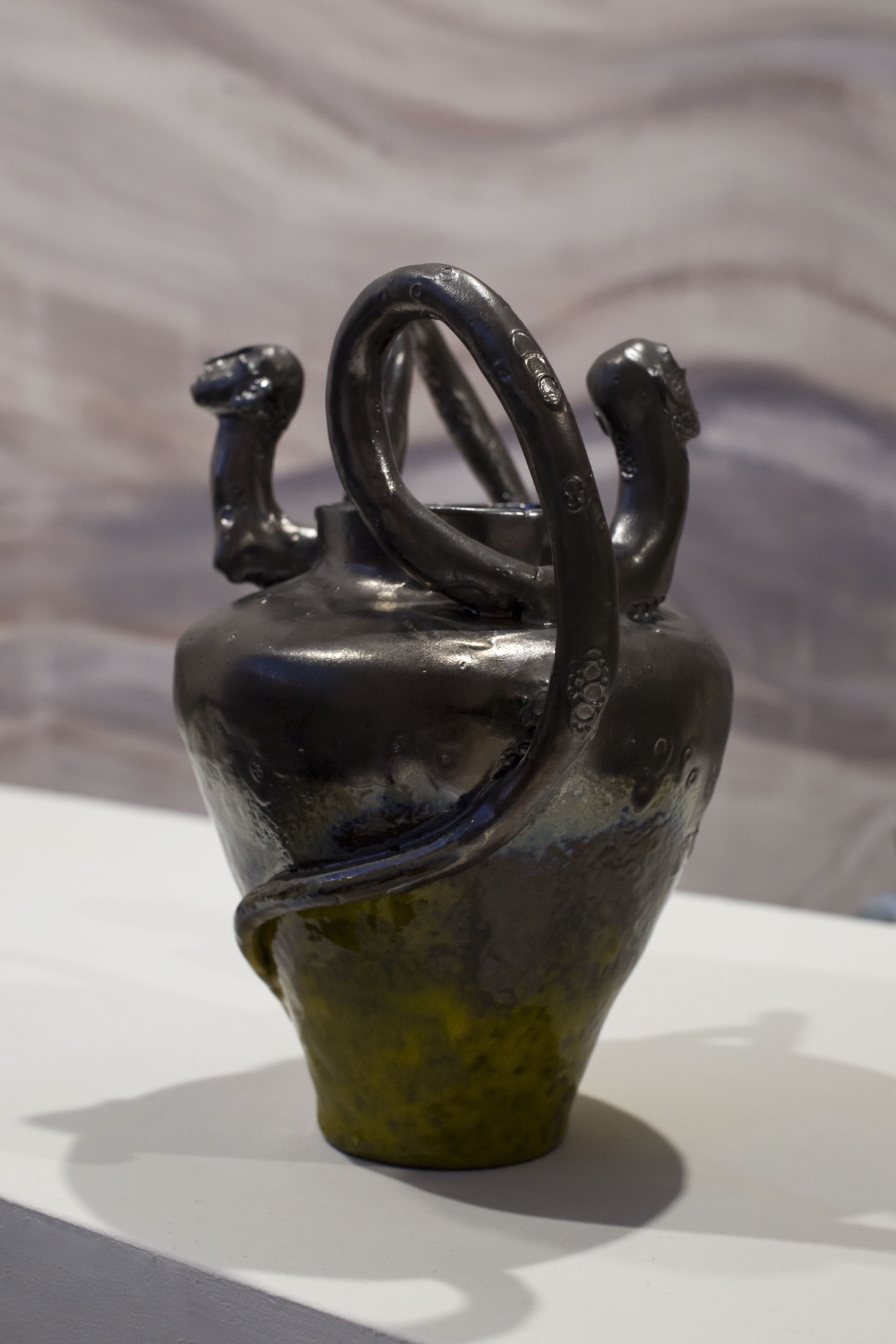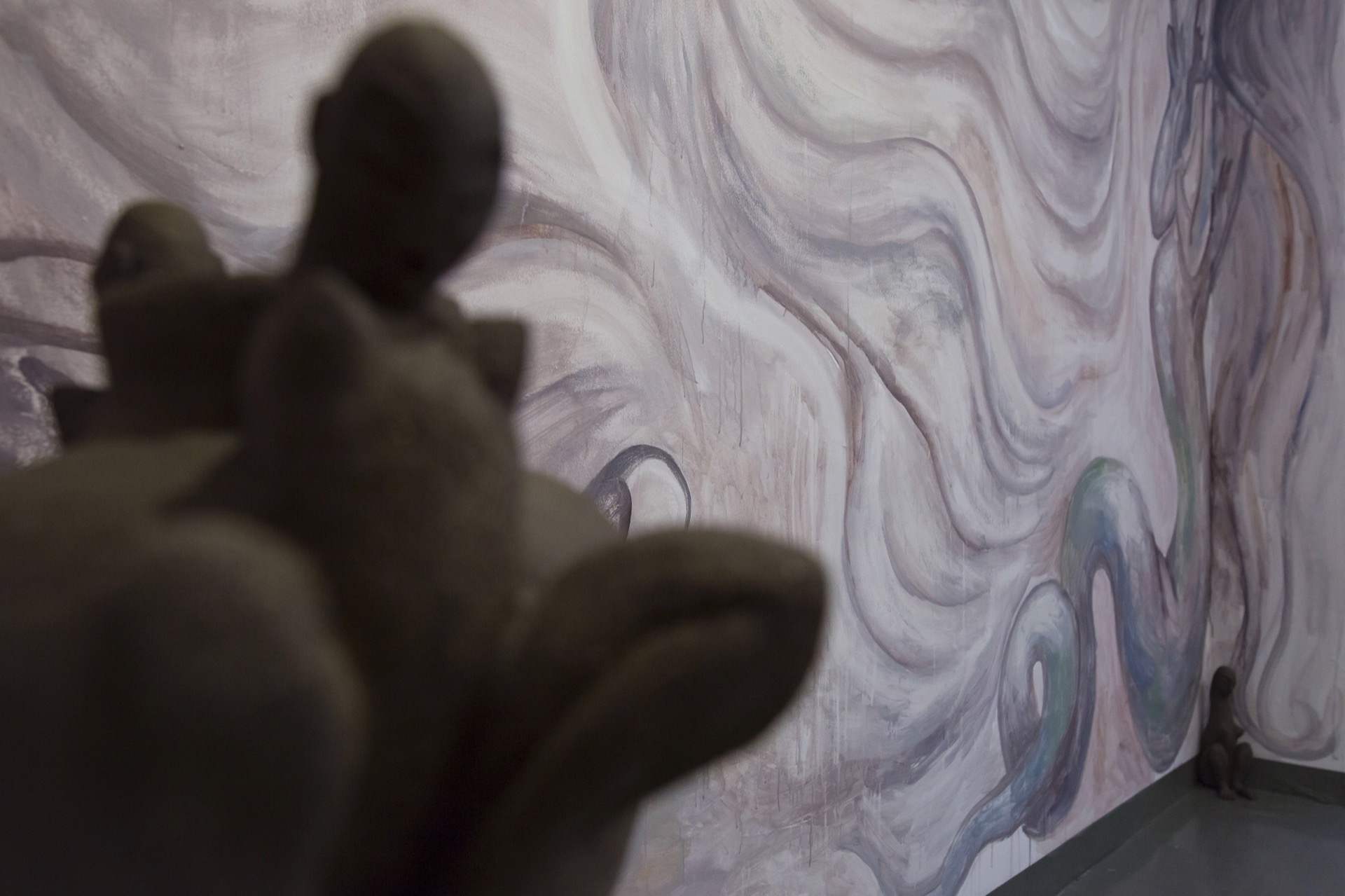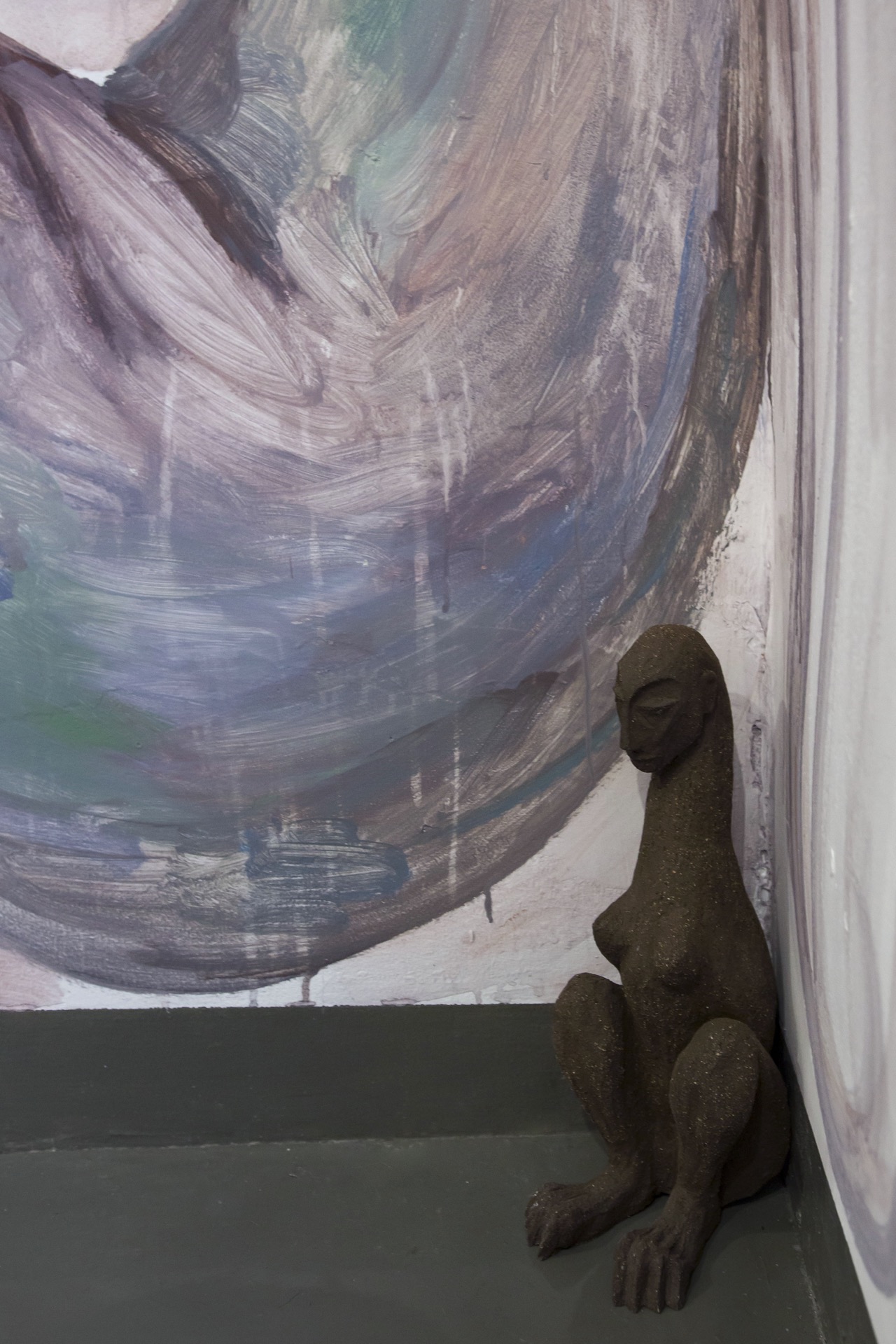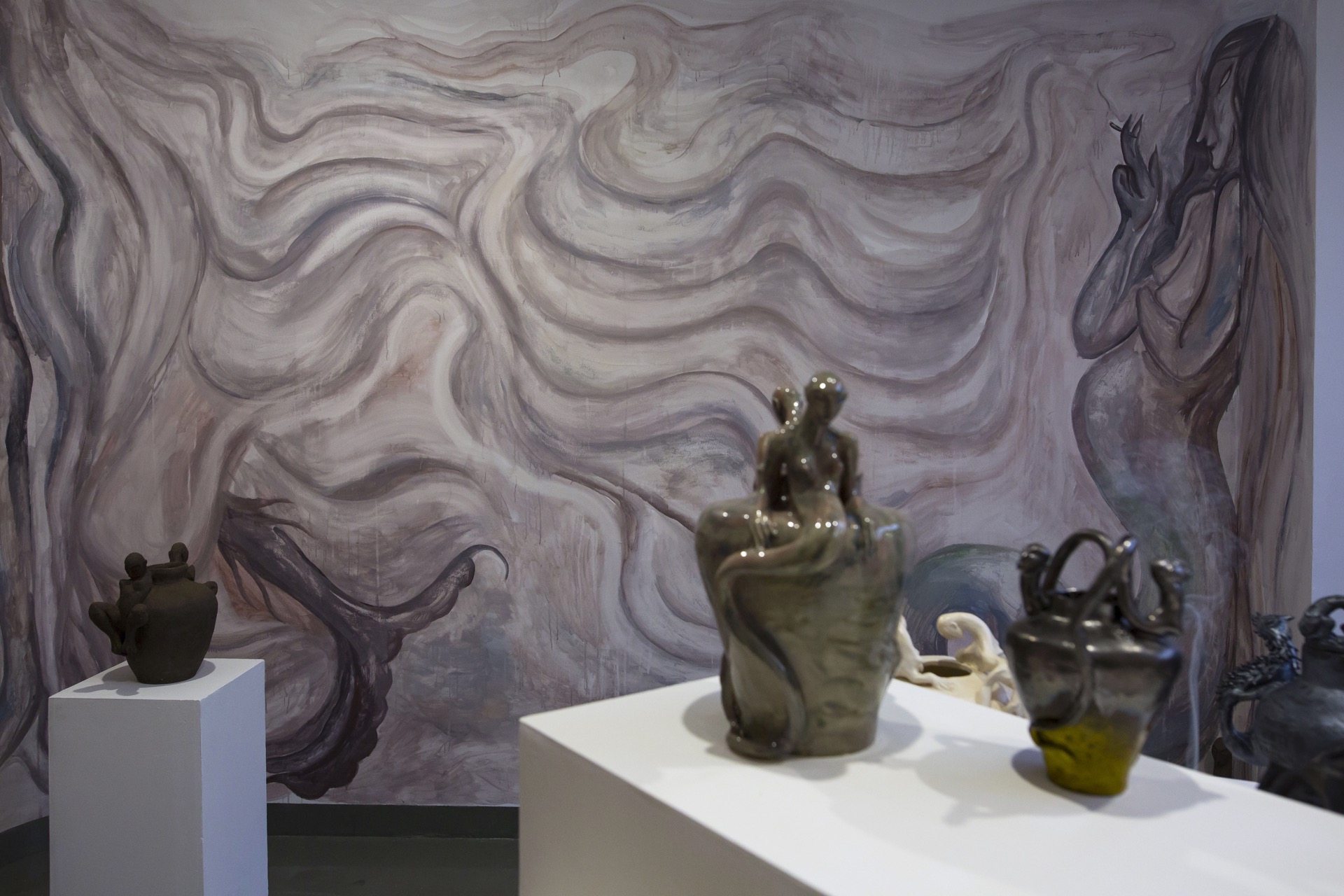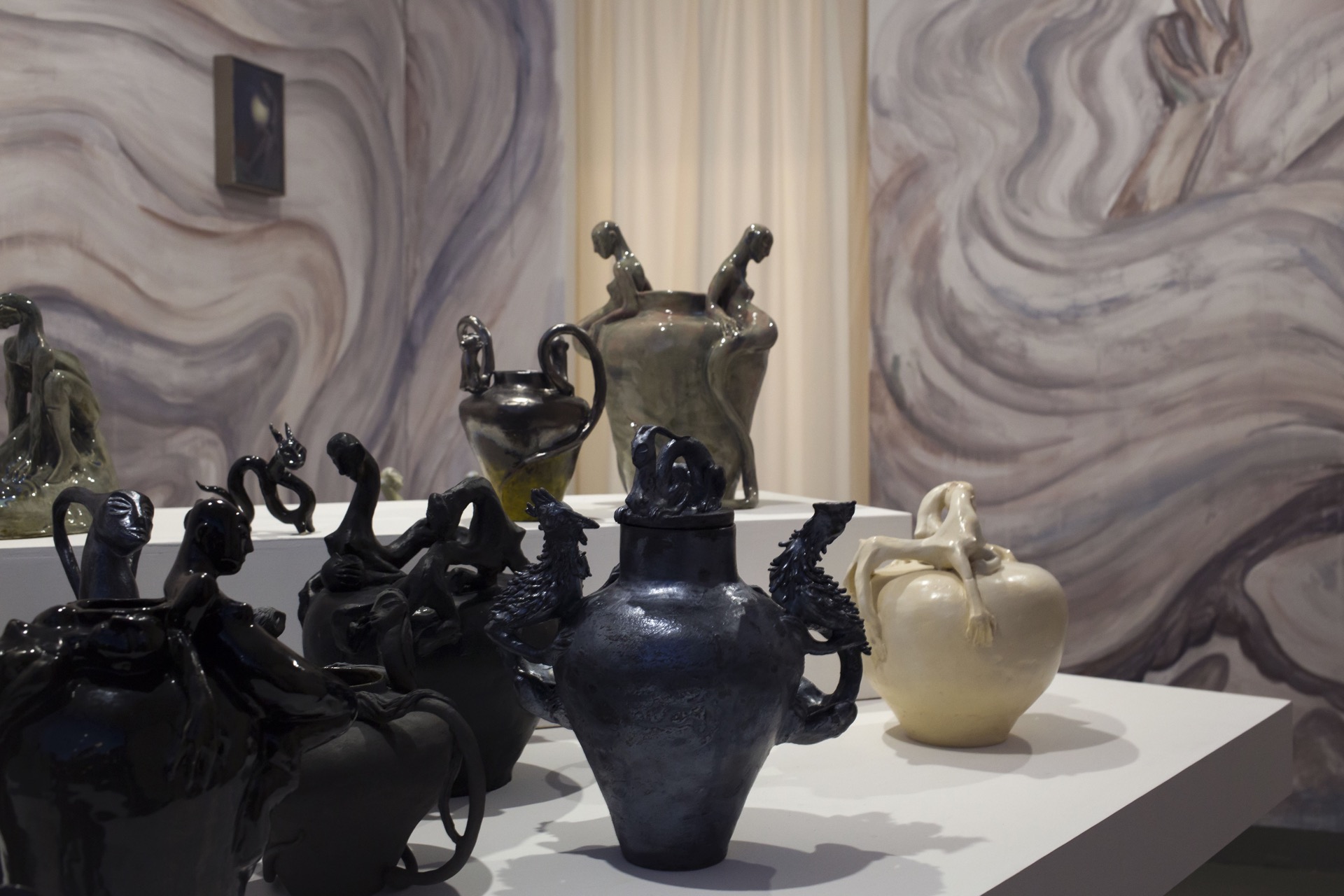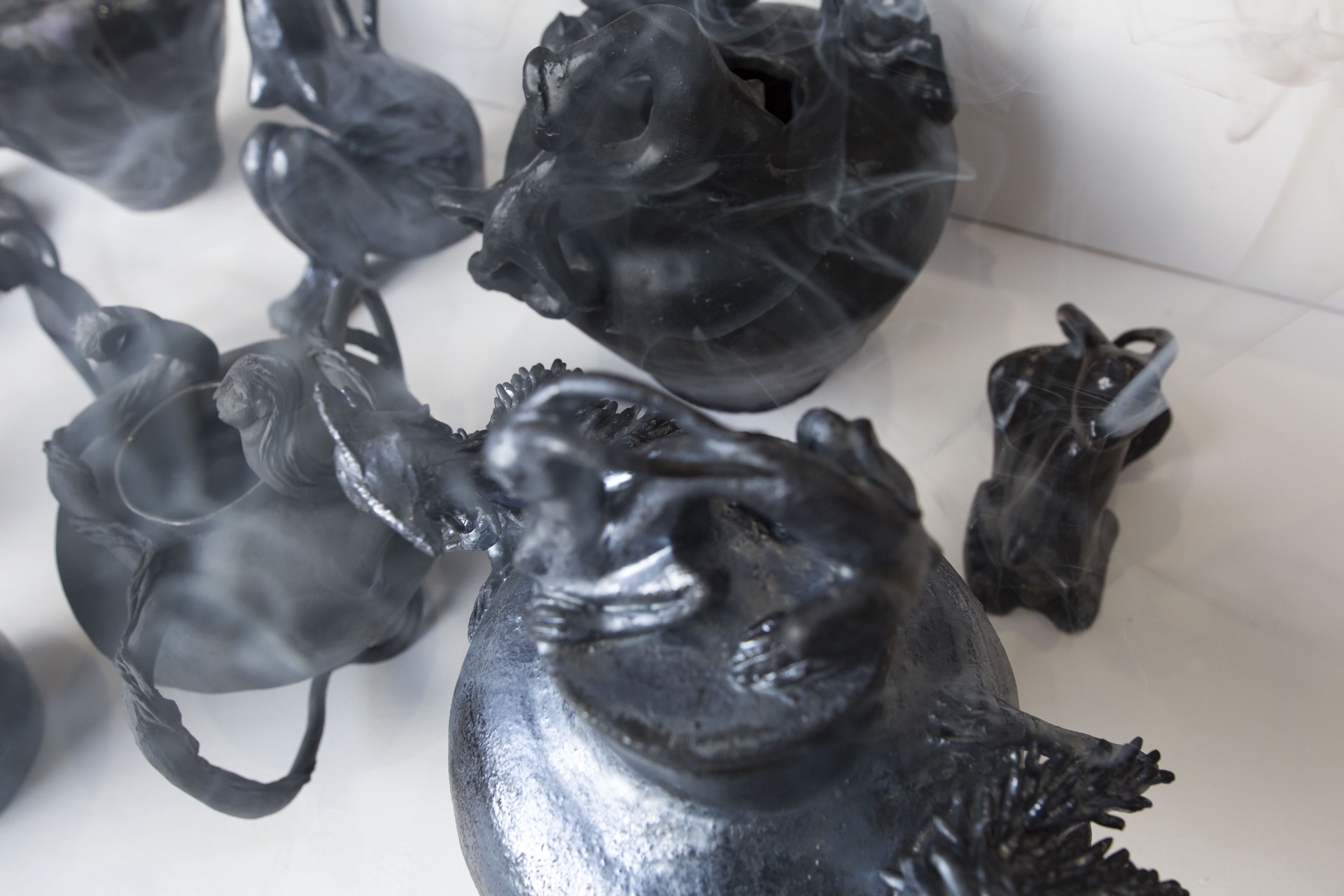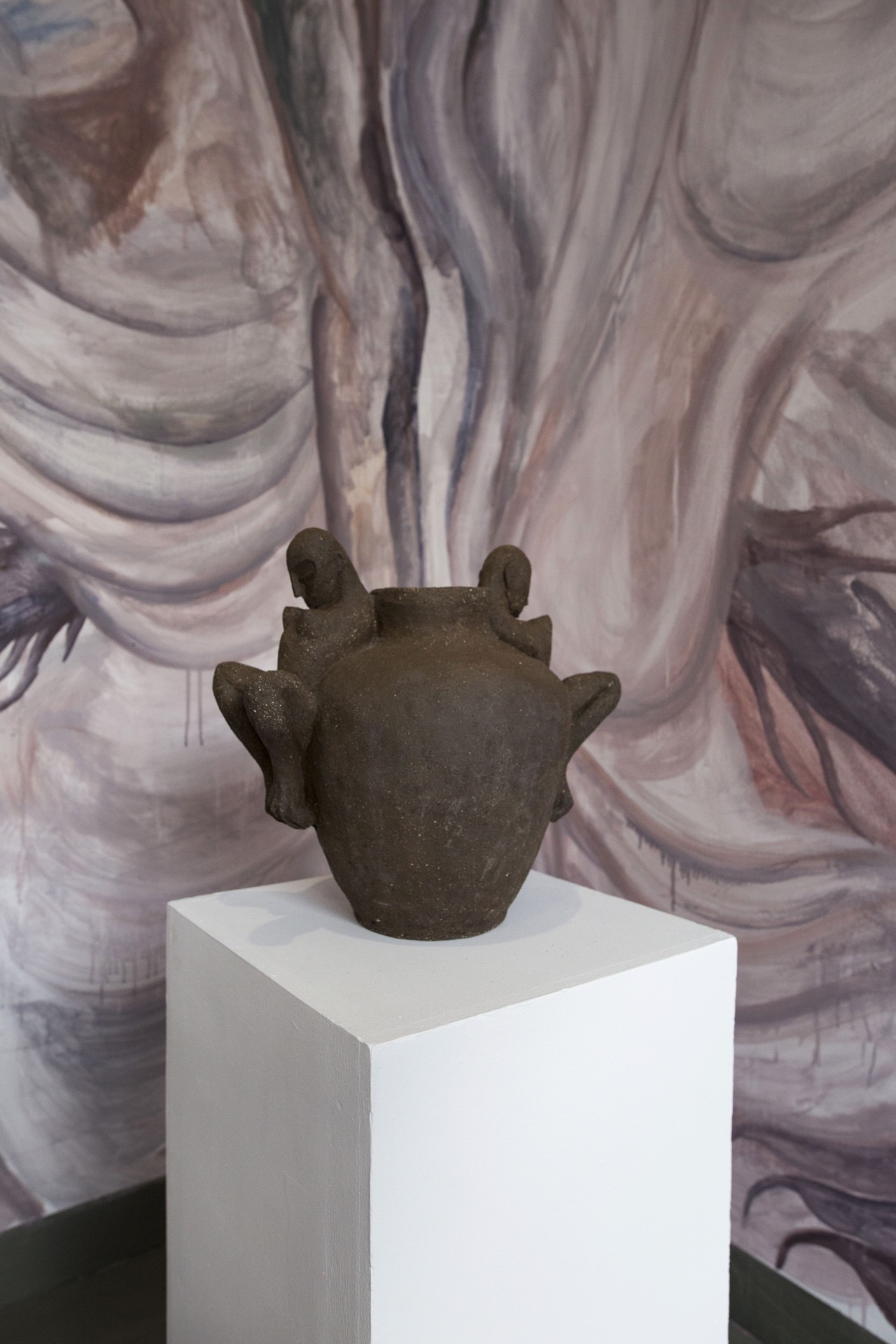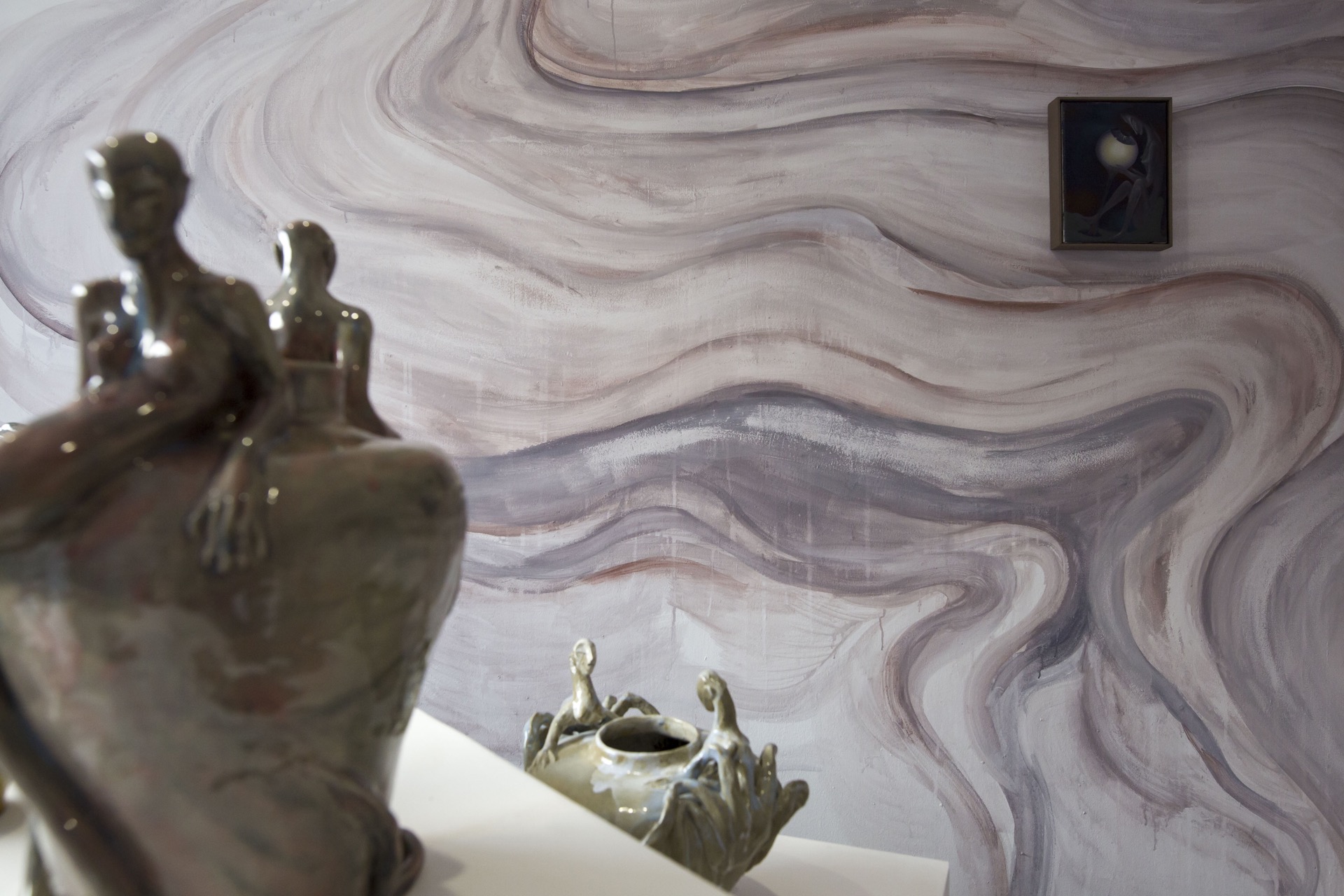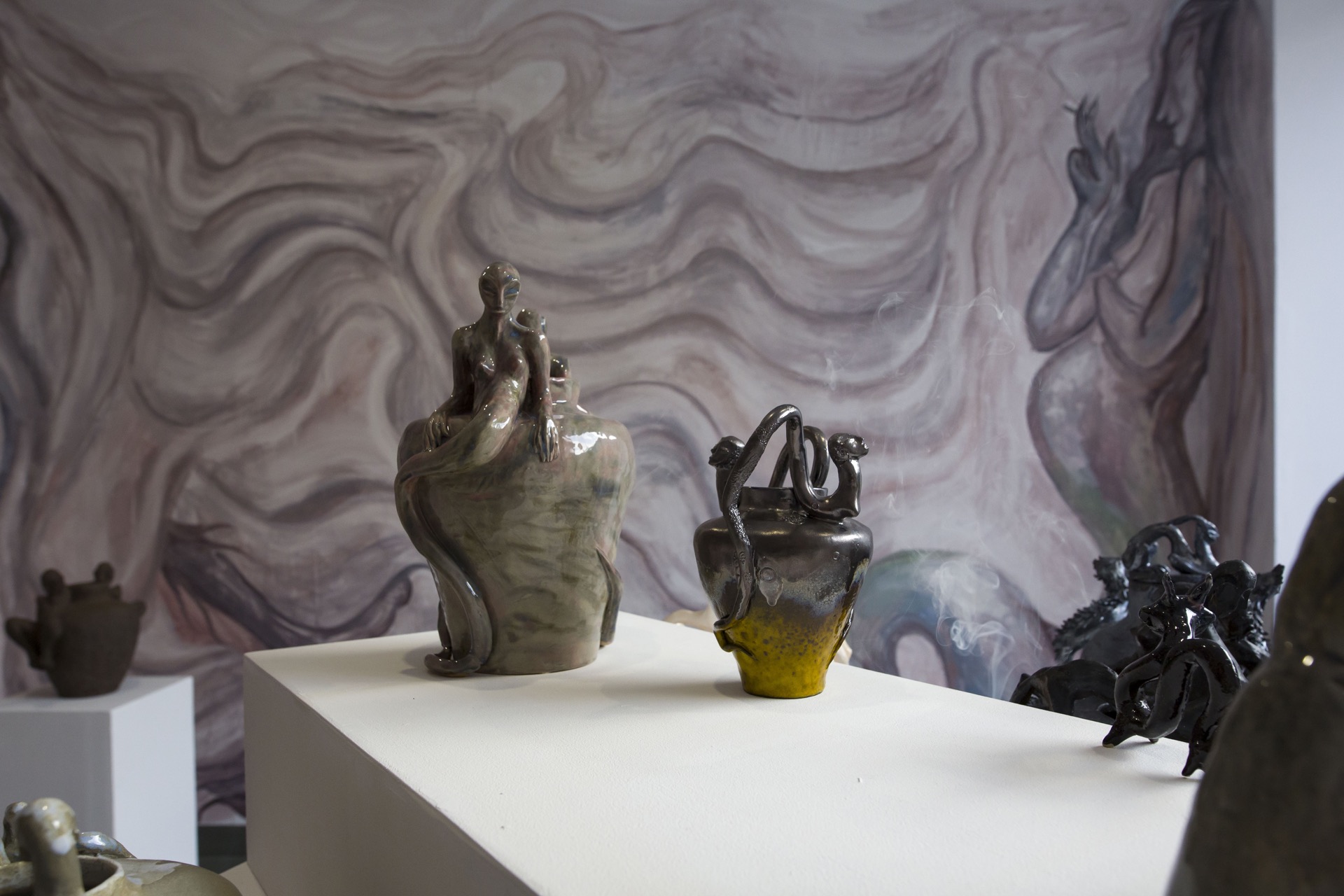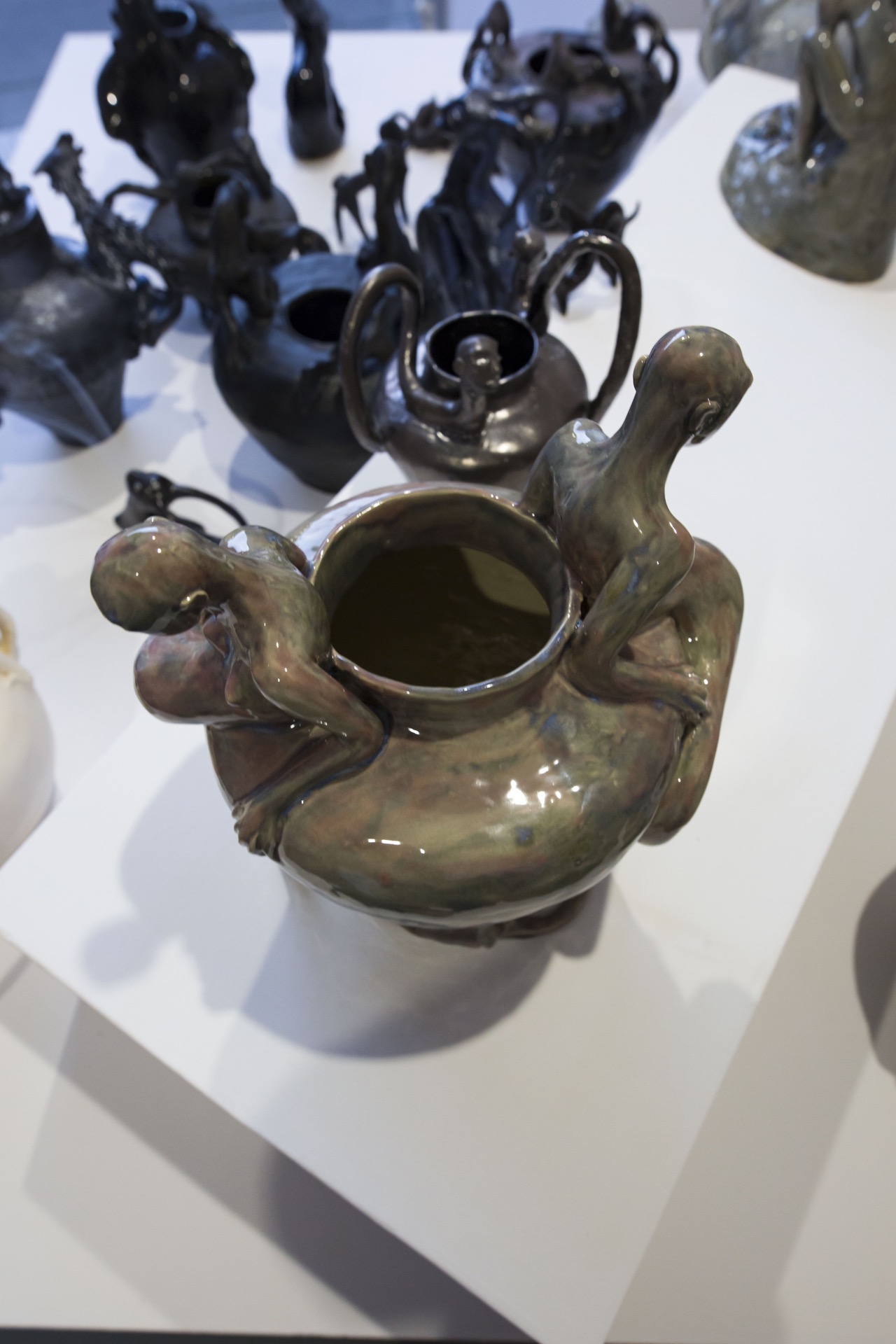From the front was a lion, from the back a snake
Cracow, 15.10 - 5.11. 2022
The canon is one of the most readily used tools for the authoritarian imposition of aesthetic and ideological values, as well as for the reproduction of certain social structures. The perpetuation of the canon is part of the desire to appropriate and subordinate human experience to top-down dictated norms and standards of perception. In both literature and art, the orientation of the canon to a particular perspective - that of the white, mustachioed representative of Western culture - also results in the residual representation of works created by women, representatives of various minorities or marginalized social groups.
The problematization of the canon and the values encoded in it takes place in Pawel Olszczynski's ceramic works on several levels. The patron of questioning what is "sanctified by tradition" becomes the figure of the chimera, which appears in the works of such canonical authors as Homer and Konstanty Laszczka. Describing the superficiality of the hybrid creature, the author of the Iliad notes: "From the front it was a lion, from the back a serpent, and a goat in the middle." The motif of the chimera as a labile creature, impossible to clearly classify, recurs in culture in moments of particular anxiety. As a figure of ambiguity, irrationality, whimsy
(in 17th-century Poland, one tuned out chimeras rather than frills), it is most often an expression of collective fears, individual anxieties or phantasmagorical desires lined with the specter of collapse.
The monstrous forms of Olszczynski's intimate sculpture, inspired by the aesthetics of
20th-century Cracow ceramics, resound not only with the growing contemporary anxiety, but also with the desire to question the established hierarchies. For Olszczynski, a chimera is an entity that, although formed from seemingly incompatible parts, nevertheless makes up a whole. Flanking the antique form of the vase with hybridized figures, the artist refers to the work of Konstanty Laszczka and Jan Szczepkowski, expanding the context of this type of representation with reflections rooted in postmodern thought. Chimera becomes a figure that accentuates its ambiguity and inconclusiveness, so that it is precisely in the impossibility of stabilization that it finds strength. At a time of hybrid cultural identity, resisting fixed classifications, binary oppositions and normative patterns of behavior, with claws and claws the chimera fights for full-fledged subjectivity.
Zofia Malysa-Janczy
The exhibition is co-financed by the Municipality of Krakow.
The problematization of the canon and the values encoded in it takes place in Pawel Olszczynski's ceramic works on several levels. The patron of questioning what is "sanctified by tradition" becomes the figure of the chimera, which appears in the works of such canonical authors as Homer and Konstanty Laszczka. Describing the superficiality of the hybrid creature, the author of the Iliad notes: "From the front it was a lion, from the back a serpent, and a goat in the middle." The motif of the chimera as a labile creature, impossible to clearly classify, recurs in culture in moments of particular anxiety. As a figure of ambiguity, irrationality, whimsy
(in 17th-century Poland, one tuned out chimeras rather than frills), it is most often an expression of collective fears, individual anxieties or phantasmagorical desires lined with the specter of collapse.
The monstrous forms of Olszczynski's intimate sculpture, inspired by the aesthetics of
20th-century Cracow ceramics, resound not only with the growing contemporary anxiety, but also with the desire to question the established hierarchies. For Olszczynski, a chimera is an entity that, although formed from seemingly incompatible parts, nevertheless makes up a whole. Flanking the antique form of the vase with hybridized figures, the artist refers to the work of Konstanty Laszczka and Jan Szczepkowski, expanding the context of this type of representation with reflections rooted in postmodern thought. Chimera becomes a figure that accentuates its ambiguity and inconclusiveness, so that it is precisely in the impossibility of stabilization that it finds strength. At a time of hybrid cultural identity, resisting fixed classifications, binary oppositions and normative patterns of behavior, with claws and claws the chimera fights for full-fledged subjectivity.
Zofia Malysa-Janczy
The exhibition is co-financed by the Municipality of Krakow.
